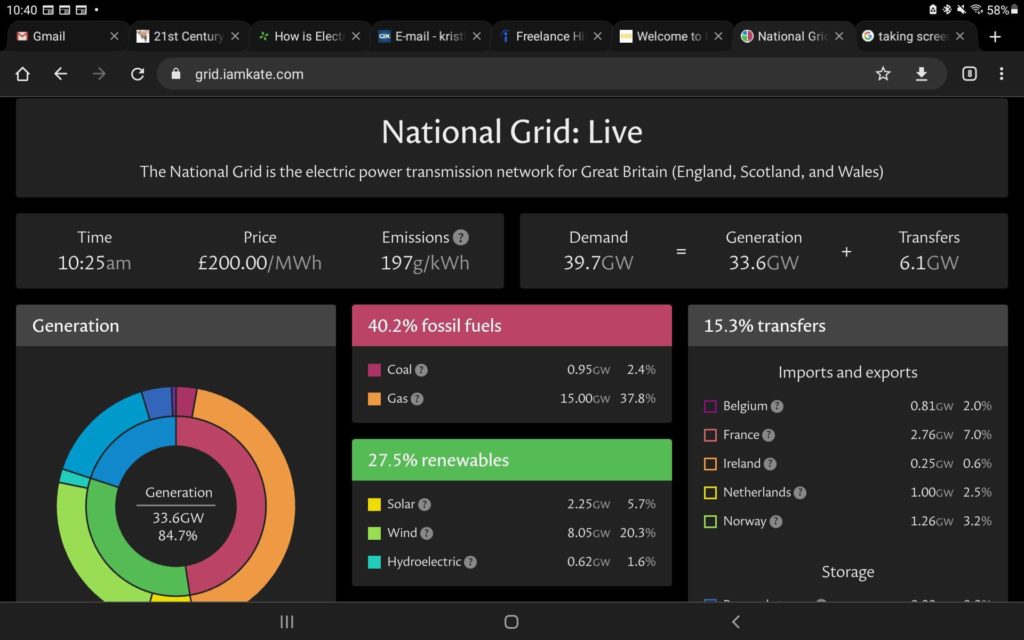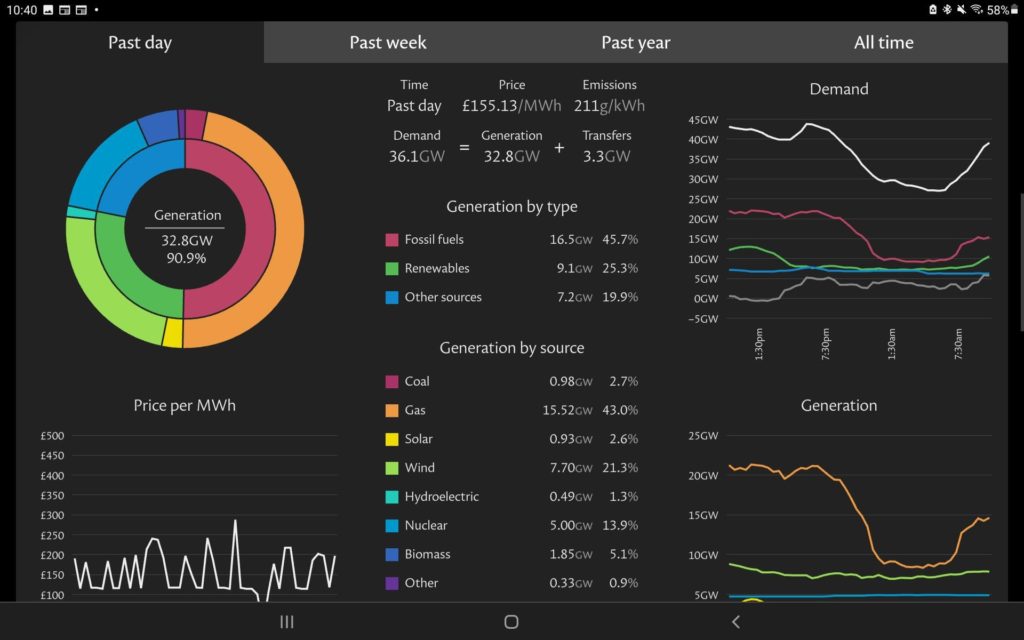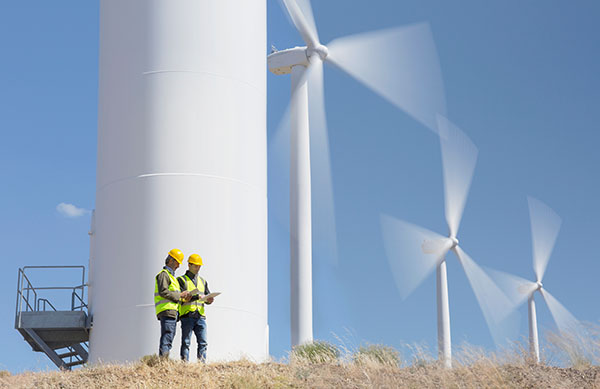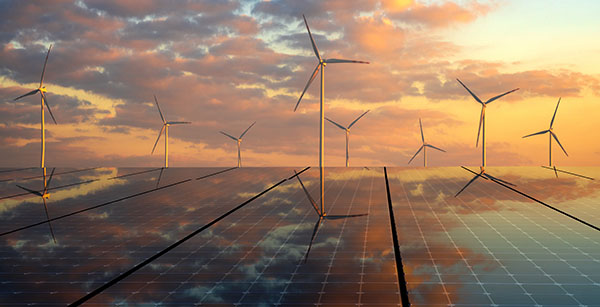The troubling future of the green electric revolution
03/15/2023 / By News Editors

The moment humankind harnessed electricity was a milestone and the world would never be the same. Defined as the modern era of western civilization. Technology is developed to fulfil the challenge before us, and to solve the task at hand. We do this by applying our problem-solving mind and ingenuity to drive innovation. But when it comes to the green energy revolution, have our policy makers really thought the problem through?
(Article by Kristian James republished from 21stCenturyWire.com)
Think about it. Returning home from a gruelling day to conduct the simple act of flipping on the wall switch, giving us light and security. Powering up the computer or flicking on the television seems so trivial. Lest we forget the vast infrastructure behind the pressing of the switch.
The expectation of the power always being present, available and ready to use. Some would claim that the reliance on technology, the access to electricity is a human right. Increasingly more and more crucial services exist not as a physical space to walk into and interact with an individual, only as an online portal. For those businesses and services. It makes sense. They’ve no shelves to occupy, no ground rents to pay, records are held on web servers half a world away, allegedly always accessible. We have committed essential content to exist only in the virtual space. The world has moved to the web. Looking for a job? You have to fill in the online form. Government services all online. As so much of our lives is now centred around access to the internet. The punchline is intentional, there are massive power plays at work behind the scenes.
News headlines bombarded the senses bringing confusion and panic throughout the brutal cold spell the UK experienced in late December early January. For months the recurring word of “blackouts” and the theme of not enough supply to meet the draw on demand. The National Grid, the UK’s chief energy and infrastructure provider, and they put out updates of the struggle – their claims boiled down to that there are too many people having the heating on. Imagine that, it’s the dead of winter in the UK and people have got the heating on. Who knew?
So according to the experts, energy available on the National Grid is not sufficient to meet demand, whilst pointing the blame to the Trikolor of the Russian Federation. Gotta keep poking the Great Bear to the east. Is there secretly relief at the vast increase in the amount of closed businesses who themselves would be drawing upon the system, no longer doing so locally for the National Grid? Perhaps this can be argued yes. It’s a double-edged sword; lesser numbers of business rate customers means lower income, yet the profits being reported are substantial.
The EV and Net Zero Paradox
An important question to ask of our MPs is: if there is a challenge of not enough power in the system to get us through a few days of cold, then how will we ever have the sufficient level to have an entire region of countries running on electric vehicles that require frequent recharging? Especially considering the legislation they have voted to put into place that will see the traditional fuel coal-fired power plants and natural gas processing closed?
A worthy note of consideration in this period, is the fact that the UK government were forced to reengage three coal-fired power plants that were due for decommission and demolition to meet those December 2022 and January 2023 demands. As the maws of the “beast of the east IV”, “Arctic Storm” and the notorious “Polar Vortex” poised their strikes into the United Kingdom, all we get is the ususal reactions of rage from the green brigade and too much chagrin from the press. Considering COP27 had only recently occurred, with the UK steadfast in its commitment to Net Zero, the reality is now surely laid bare.
The contradictions and difficulties go further back in the literal pipeline…
So let us first examine first where electricity comes from. Electricity is a secondary energy source that we get from the conversion of other sources of energy such as coal, natural gas, oil, nuclear power, and so on. These sources are known as primary sources. Primary sources can be renewable or non-renewable, but the electricity itself is neither. Visiting the National Grid website, usefully they provide a minute to minute snapshot of the draw upon each primary energy source.
Screen capture at the moment of writing on a typical day in mid January, we are generating an output of 33.6 Gigawatts. The demand is 39 Gigawatts and we are having to pull in additional power from the continent to fulfil the demand. 40.2% is being generated from coal and gas, and a further 27.5% from renewables, including solar, wind and hydroelectric. Also add nuclear, and then biomass to pick up a further 16.9%.
The data shows at the time of writing, there was an imbalance as demand outstrips the domestic supply, having to pull on partners and the grids of nearby countries in Europe to meet Britain’s realtime requirements.


Demonstrably the renewable sources, solar, wind and hydro pick up some of the slack required, but not by a significant amount. Great Britain’s geographic position yields untapped hydroelectric possibilities. Yet, efforts seem unimpressive on the take up of the challenge. Using existing oil and gas platforms, retrofitted with tethered arms of multiple turbines – has been a possibility since the early 90’s when I first heard the intention to utilise the rapid tidal undercurrent to drive turbines to generate the electricity. The flowing of the water has no stopping force. A 2021 study published by Edinburgh University revealed that the tidal streams alone in the UK could deliver an impressive 11% of the UK’s current annual electricity demand. Projects on the table from the British Hydropower Association, all of which have not been given the go ahead or are facing opposition could be ready to drive 10 Gigawatts in the grid by 2030.
The National Grid energy website is very informative, with the live energy data as a valuable resource for diving into details, and consequently exposing the fragility of the UK energy portfolio. At every turn for development of energy production, there is significant push back. The wind turbine farms being unsightly, and a risk to birds. Hydraulic Fracturing aka fracking, with its recorded and documented environmental damage, as wells are driven deep into the Earth filled with sand, lots of water, and a toxic chemical soup designed to release the shale gas under high pressure. What about solar farms? Sure, they work well in the desert, but not “Blighty” with its cloudy overcast skies. The Liz Truss administration for her short lived tenure, was vocal about giving the go ahead to make the country a new powerhouse of energy and self-sufficiency. But as politicians known full well, it’s all easier said than done.
Where does the fuel come from for power UK stations?
Drax are the UKs largest power station holder, and found themselves in hot water as a scandal broke in late 2022. Their ‘green’ renewable branded fired power plant was using compressed wood pallets and calling it ‘renewable bio mass.’ They were found to be paying for the stripping of conservation forests in Canada, leaving wastelands in their wake.
Drax at the time of the Panorama documentary had received more than £6 billion in environmental subsidies from the UK taxpayer.
Russian Embargo Squeezing The West
At a time when the unions fought for greater health and safety standards, good pay and better pensions the coal industries of the UK quit operations, or left entirely, signing our energy sovereignty over to imports. Most of the households were transitioning to heating systems using gas. Thus, the demand for coal reduced significantly. Industrial coal volumes and quality of coal are still required for a number of key power stations sourced from a variety of countries, with Britain’s rich coal connection to Colombia and an increasing trade connection with the US, post-Brexit. Europe and the UK’s contracts with companies such SUEK (Siberian Coal Energy Company), Mechel, Raspadskaya, Evraz, Severstal – all of which have been embargoed as of August 10th 2022 due to heavy sanctions due to the ongoing geopolitical conflict regarding Russia-Ukraine. These are some of the largest coal mining companies in Russia and they export a variety of different types of coal, including thermal coal (used for power generation), and coking coal (used in the steel-making process).
SUEK was one of the primary fuel suppliers to the UK, and indeed Europe. Commenting on the situation, Maxim Basov, the CEO of SUEK, pointed out that the European sanctions applied to Russian coal suppliers aggravate the growing global energy crisis, making the EU a territory of exorbitantly high prices and harming the European economy and consumers because it makes energy-intensive production economically unprofitable. Populations in other parts of the world also suffer from these decisions: for billions of people in Asia, Africa, and Latin America – severe energy shortages carry the risk of social turmoil.
Global demand for mobile energy carriers – coal and liquified natural gas (LNG) – keeps surging. As reported by Bloomberg, wholesale energy prices in Europe increased more than 10 times in one year and reached new historic highs. The EU’s decision to phase-out Russian energy imports has only served to worsen the situation and drive up prices, and which has also created an urgent need to replace supplies of Russian pipeline gas. Furthermore, EU restrictions on Russian coal have effectively doubled the burden on a market already encumbered by the ongoing search for a replacement for Russian gas. All of this has created additional demand amounting to almost 20% of the global trade in mobile energy carriers.
The UK, is reliant on thermal coal and coking coal, and is now finding itself at another choke point. That “Net Zero” date coming ever closer and with it the promise to move way from fossil fuels.
LNG still holds its place as many nations’ primary energy source. As the Morningstar reported, the Russian-Ukraine situation was poked heavily by outside influences: “The flow of Russian pipeline gas to the European Union has been all but eliminated. Volumes in 2023, via Ukraine and the Turkstream pipeline, are planned at 25 billion cubic meters, down from 150bcm in 2021. To fill the gap, the EU has nearly doubled its LNG imports to 123 bcm in 2022 from 74 bcm a year earlier. About a third of LNG imported last year came from the US, which became the world’s top LNG exporter in the process. Curiously, and widely overlooked, Russia remains in second place ahead of Qatar.”
Of course, the war has been great for the American energy business. With that debt ceiling creaking beyond belief in the land of the free and home of the brave, the crucial increase in its exports of LNG is driving business overseas, so you can believe they would not want that matter resolved.
Dreaming of Electric electric revolution
According to the document published by the Environmental Protection Agency, no less than 14% of the global greenhouse gas emissions were from transportation, mainly from the particulate matter exhaust from vehicles. The main alternatives for paving the way to a cleaner greener environment is said to be the supposed emissions-free electric vehicle (EV).
The race is on to change the whole world’s combustion engine vehicle fleet over to EV, and countries have committed to meeting those deadlines. The cold hard fact is reality hits firm and doesn’t take prisoners. And reality is a double whammy: of the largest volume of cobalt, the essential component in the production of lithium-ion batteries for electric batteries and motors, is found in its greatest abundance in the Democratic Republic of the Congo with a projection of sitting upon more than 70% of the commodity, and it’s estimated that the southern region of the Congo is currently sitting upon 3.4million tons of Cobalt. Canada, Australia and Indonesia also having volumes of the valuable resource.
In terms of raw numbers, the Cobalt Market report 2021 from the Cobalt Institute cites that the incredible growth led by lithium-ion battery applications for electric vehicles accounting for 63% of annual demand and an 85% of y/y growth, with some 160,000 tons extracted in 2021. With the majority of mined cobalt going east to Chinese production facilities, it seems that Chinese corporations have swooped in to buy up a majority of the mines. China remains the largest refined cobalt producer, providing around 70% of both the 2021 refined supply, and with year-on-year growth. The ethics behind such rapid extraction is being called greatly into question, as the demand continues soaring. The so-called “Artisan extraction” method is still being employed in the region. Siddharth Kara is investigative journalist and author of “Cobalt Red: How The Blood of The Congo Powers Our Lives”. Appearing on episode #1914 of the Joe Rogan Experience podcast for a long form conversation discussing his multi year investigation into the mining operations in the Congo, Kara stated that every cobalt mine in the Congo relies on child labour and poverty slavery. Individuals are paid little, and labour at tremendous risk to their health. When it’s the only employment in town, they are exploited. Cobalt is today’s blood diamond, a key earth mineral required to be part of the green revolution, the transition to electric comes with a terrible human and environmental cost, and one that we knowingly accept. The Artisan method means that the metal supply is scraped together by the lowest end of the production, where someone has to physically labour to extract it. That labour comes with horrendous poisoning and detrimental life-shortening health effects. With powerful economic and geopolitical positioning at play, this leaves little oversight, and the prospects are dim for any improvement to the situation.
As ‘fossil fuel’ vehicle restrictions comes into force, the only vehicles being given the green stamp of approval are hybrids and EV’s. Yet, it is very clear, they are far from green, Earth-friendly or sustainable. Consider beyond the cobalt matter, the combination of metals and other materials that comprise the main components of an electric motor – including the stator, rotor, and bearings. The stator, which forms the stationary part of the motor, is typically made from aluminium. The rotor, which rotates inside the stator, is usually made from a stack of laminated steel or aluminium discs. The rotor is also typically fitted with a set of permanent magnets, which are used to generate the motor’s magnetic field. These magnets are typically made from rare earth elements such as neodymium and dysprosium, which are mined mainly in China, but also in other countries like Russia, India, and Brazil. Copper wire is also used to wind the stator and rotor, and insulation materials like varnish and epoxy are used to protect the windings. In summary, the obvious statement being made is that the human cost and Earth cost of the materials used to create an electric motor – is that the resource and environmental cost for an electric vehicle is extraordinarily high. Sourced from various countries around the world, the transport required to move such material is mostly fossil fuel driven. Electric HGVs whilst on the market, have yet to find themselves into any major fleet due to their high cost. Electric powered cargo ships and aircraft are much further down the line to be a staple of the supply chain.
Big Problems with the West’s ‘Green’ Ambitions
Perhaps the worst part of the EV’s ‘green’ credentials is the fact that the ever-increasing electrical power required to charge all of those car batteries – is still going supplied mostly by hydrocarbons aka “fossil fuels”, namely coal, gas and oil. This is not going to change much anytime soon.
Also, the supply lines still run mainly through Chinese hands. Currently, China is the world’s largest producer of rare earth elements and supplies the majority of the world’s demand. However, China has a precedent of placing restrictions on exports of rare earth elements in the past, which has caused concern about the availability of these elements for use in technologies, creating a stranglehold on developments elsewhere.
The Committee on Climate Change, a UK based independent statutory body established by the government following the Climate Change Act 2008, was the body who called for all new cars and vans to be zero-emission by 2035. In a letter addressed to the Committee on Climate Change in 2019, from the Natural History Museum’s head of Earth sciences, which was subsequently published publicly, revealed the electric elephant in the room shown bare. Richard Herrington explained that to use just the scope of the UK, to replace the 31.5 million cars with electric vehicles, the world would need 207,900 tonnes of cobalt, 264,600 tonnes of lithium carbonate, and “at least” 7,200 tonnes of neodymium and dysprosium, as well as 2,362,500 tonnes of copper. This is twice the volume of the annual global extraction of Cobalt.
Still, 2.5 million new cars sold each year in the UK electric “will require the UK to annually import the equivalent of the entire annual cobalt needs of European industry.” It’s almost as if the government hasn’t thought out the scenario at all, or it’s simply planned chaos.
Considering those power stations set to be phased out, many of the older coal-fired power stations have been, or are in the process of being retired due to their high emissions output, and also because of their age. The UK government has also set a target to phase out unabated coal power by 2025. That day is drawing nearer.
Additionally, several of the older power stations in the UK are also due to be decommissioned as they reach the end of their operational life. They include:
- Fiddler’s Ferry Power Station
- Ferrybridge C Power Station
- Rugeley Power Station
- Eggborough Power Station
- Ironbridge Power Station
- Cottam Power Station
- West Burton Power Station
- Drax Power Station (partially converted to biomass)
Several nuclear power stations in the United Kingdom are also due to be retired, as they reach the end of their operational lives. These include:
- Hinkley Point B
- Hunterston B
- Dungeness B
- Sizewell B
- Bradwell
Each one of those current energy generators ticking off from the National Grid’s total output, whilst there are several new power plants in the United Kingdom that are due to come online in the near future, such as Hinckley and Sizewell having a C site becoming operational. Wylfa Newydd nuclear was recently granted planning permission. Three major offshore wind farms (London Array, Hornsea and Doggerbank), also sit idle in financial, regulatory and permission redtape. This, coupled with various opposition challenges. We are noticeably off-track for this new National Grid to come together, thus we are told that we are on track to be energy insufficient with a likelihood of vastly increasing prices that could continue to ravage the pockets of regular working people.
Converging our lines of inquiry, the demand on the National Grid presently exhausts the volume it can presently produce. The drive to engage new lines of development seems lacklustre, or not occurring.
If these sums do not add up, then is government going ask us to accept rolling black-outs, as a weekly or daily routine?
EV Sobriety
If the goal is to switch all vehicles to be powered by electricity, then it’s clear that the National Grid will be incapable of such a demand.
How will such a grid cope? According to a Green Alliance report from 2017, just six electric vehicles recharging overnight in one area can send a substation to power down all the homes and businesses it supplies. The proposition that most homes with an electric car on a single residential street charging overnight would seem thus impossible. That imbalance is going to hit hard under the weight of its own legislation and the catastrophic crash to the economy that will follow in its wake – to meet this increased demand for that 2030-2035 hard line, as the phase on ‘no new petrol’, or diesel cars, or van sales comes into effect, and with petrol stations set to close or converted to electric charge stations. This action also has a reaction for the lack of future gains on Fuel Duty Tax, unless the Tax gets moved to the supply of electricity, adding the cost to the user. This seems likely, as government would not want to give up its main source of revenue. Suddenly, the idea that EVs will be cheaper to fill up than a combustion engine vehicle – may fade in the very near future, making going ‘green’ even more expensive. The National Grid would need to be expanded and upgraded, and new power generation capacities would need to be built. Additionally, renewable energy sources such as wind and solar power would need to be developed and integrated into the grid to reduce the reliance on the fossil fuels currently in use. But this is a massive and long-term project. These costs are going to be thrown to the taxpayer.
So blatant is the observation that the time ahead is going to be fraught with instability and energy difficulties, or at worst… a self-imposed abject failure. If the alternative solution is the planned ’15 minute cities’, then maybe we may not need those cars anyway.
Utopia beckons.
Read more at: 21stCenturyWire.com
Submit a correction >>
Tagged Under:
Aluminum, battery, big government, China, cobalt, Collapse, electric revolution, electric vehicle, electricity, energy supply, fuel supply, future tech, green energy, green living, Green New Deal, green tyranny, inventions, metals, power, power grid, rationing, Russia, scarcity, supply chain
This article may contain statements that reflect the opinion of the author
RECENT NEWS & ARTICLES
COPYRIGHT © 2017 GREEN LIVING NEWS




















